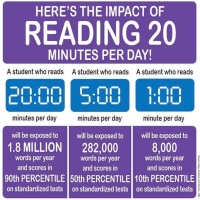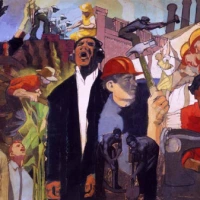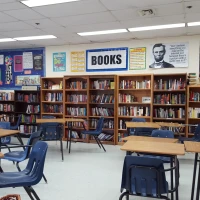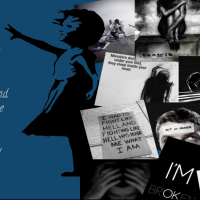the classroom library (yes, even in high school).

My husband says I work for free–although, if we’re counting this past year, I may have actually paid to come to work. The reason? You’re looking at it: the classroom library.
After being inspired by the likes of Kelly Gallagher (Readicide), Penny Kittle (Book Love), and Donalyn Miller (The Book Whisperer and Reading in the Wild), a colleague and I set out to reintroduce our students to the love of reading. The three biggest paradigm shifts included allowing our students to read anything during the opening ten minutes of class (every day), letting the students choose at least 50% of their texts throughout the year, and, in my case, surrounding my students with books. Lots and lots of books.
We have a fully functioning school library nearby, and our media specialist enthusiastically supports the literacy work we are doing in our classes. Both libraries function in tandem, but in the same way that the ELA teacher could never recreate the magic of a full media center, the full media center could never do some of the things that a classroom library can. Heather Wolpert-Gawron’s Edutopia piece affirms this notion.
I believe that a classroom library is the heartbeat of a teacher’s environment. It is the window into an educator’s own personality, and it reflects the importance of literacy in the classroom. I believe that every teacher — no matter what subject he or she teaches — should have one.
And I couldn’t agree more. So, last year, as I awkwardly clamored my way onto the shoulders of giants, I began building my library. After all, I want to convey to my students that reading is the absolute most important thing we will do together all year. Plus, countless studies have shown that reading will more effectively improve my students’ reading, writing, vocabulary, communication, and usage skills–and more so than any kill-and-drill worksheet or warm-up exercise ever will. (The ten minutes of reading alone exposes these readers to approximately 1,000,000 words in a year, and they are more apt to return to their books later in the day–exposing them to even more words, because “Ms. Hughes always stops us right at the good part!” Keep in mind, these are the same students who have fake-read their way through much of middle and high school.) What better way to sound this message than to surround my students with books?
It started with a handful of books from home that I placed on a lonely bookcase, and it has exploded into twelve bookcases (which I found at second-hand stores and on Craig’s List) that house over 2,400 books! While some of these texts were generously donated (including 100 titles from Penny Kittle’s Book Love Foundation grant), 95% of them came from library sales, Amazon, eBay, and second-hand shops. (And if you’re trying to do the math, I’ll tell you what I tell my husband: “Let’s not ruin a good night.”) The texts are arranged alphabetically by genre, and are organized and signed out to the students via Booksource. Seeing what my students are reading–whether it is via Booksource or Goodreads–allows me to perform what Teri Lesesne considers the educator’s most important job: “leading our students from where they are [as readers] to where we’d like them to be.”
The result? Every student last year read more books during the school year than they ever had!
Every. Single. Student.
While it wasn’t entirely due to the classroom library, many students shared in their exit interviews that the classroom library indeed played a role. It was impossible, they said, not to find something engaging to read. (They realized they didn’t dislike reading; they just disliked how we teachers have been assigning it over the years.) And for those reluctant readers–who would never grace the doors of a library, having a collection of differentiated texts within arm’s reach made all of the difference.
Every student learned to become a reader last year–even if it was just during English class with the Crazy Book Lady.
That’s a pretty great start.






Pingback: Spinach-filled brownies – THE LIFELONG LEARNER
Pingback: CHOICE: It Does a Reading Program Good. – THE LIFELONG LEARNER
Pingback: When Numbahs Don’t Lie (2018-9) – THE LIFELONG LEARNER
Pingback: The “Real-World” Midyear (& Final) – THE LIFELONG LEARNER
Pingback: An Open Letter to Teachers Who Don’t Allow Student Choice – THE LIFELONG LEARNER
Pingback: Regie Routman – On the Level with Leveled Books
Pingback: When Numbahs Don’t Lie: 2017-8 – The Lifelong Learner
Pingback: Charming Gardeners – The Lifelong Learner
Pingback: 5 Benefits of Going Paperless – The Lifelong Learner
Pingback: When Numbers Don’t Lie – The Lifelong Learner
Ah yes, nicely put, evyneore.
LikeLiked by 1 person
I think you’ve just captured the answer pelfectry
LikeLiked by 1 person
Thanks for the read! 🙂
LikeLike
With all these silly websstei, such a great page keeps my internet hope alive.
LikeLiked by 1 person
Thanks for stopping by–and for your kind words! 🙂
LikeLike
Reblogged this on Reading, Writing, and Learning.
LikeLiked by 1 person
Thanks so much for stopping by–and for the share! 🙂
LikeLike
Beth, I think you’ve really hit on the important points about the magnitude the curation of a classroom library can have in the ELA classroom. Over the holidays, I proudly shared the success that you and I have seen over the past few years! Thanks for offering me the kool-aid!
LikeLike
I’m so glad you’re along for the ride!
LikeLike
A few of the high school classes I’ve subbed in this year have extensive libraries in them…very cool
LikeLiked by 1 person
Wade, that is fabulous! I love seeing this trend! Many of these students fake-read their way through school, and these classroom libraries are part of what will bring them back around!
LikeLike
Wonderfully written story about the power of books. I hope each reader is inspired to begin creating his/her own classroom library–even if it’s with just a few books. We need more educators like you who are willing to stop at nothing to provide opportunities for students to discover/learn about themselves, others, and the world through the literature they read!
LikeLiked by 1 person
Thank you for stopping by, Paul, and for the encouragement! Thankfully, I work in a district where I am fully supported. Our ELA Coordinator believes wholeheartedly in the importance of creating lifelong readers. And I know that none of this would have worked without that kind of support.
LikeLike